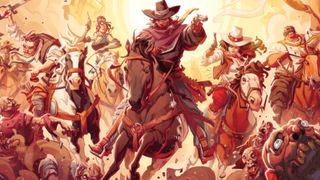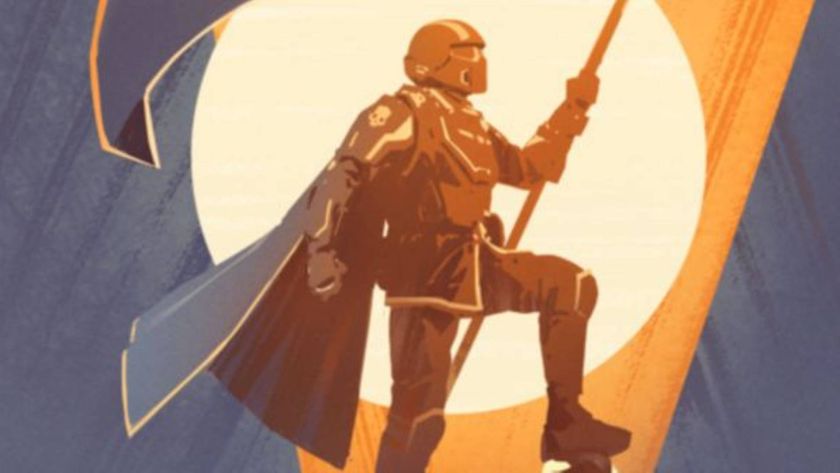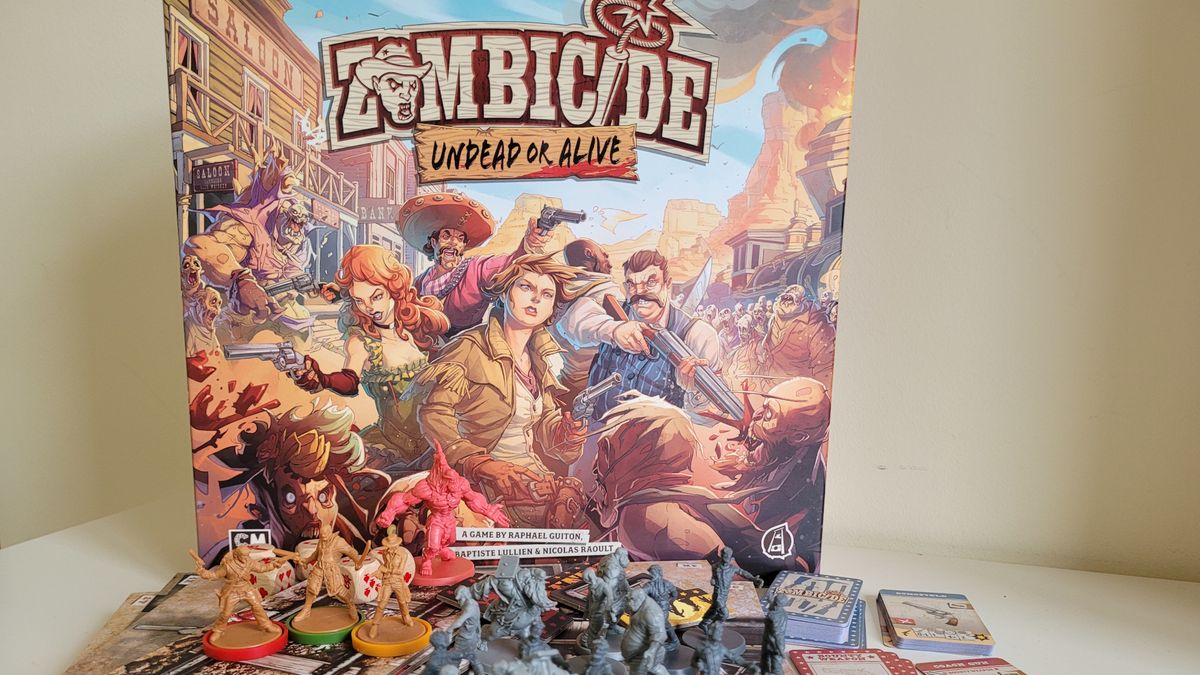12DOVE Verdict
There's a lot of fun to be had in Zombicide: Undead or Alive thanks to exciting, stripped-down mechanics, new environmental gameplay, and more. But eventually, the repetition will start to take its toll.
Pros
- +
Streamlined and faster-playing iteration of this popular survival horror game
- +
Awesome plastic miniatures and board art
- +
Rewards strategic planning but has plenty of dice-rolling excitement
Cons
- -
Lack of variety in actions and zombie types makes the game feel repetitive
- -
Many expansions are unavailable (or hard to find) at retail
Why you can trust 12DOVE
Zombicide, a franchise of cooperative undead slaughtering, has become a plastic juggernaut of tabletop gaming since its inception in 2012. Since then it’s been through around half a dozen iterations, each of which is supported by an eye-watering array of expansions. This latest box, Zombicide: Undead or Alive, moves the action to the Wild West along with a slew of rule changes that streamline play. But will it prove to be king of the corpse pile?
Zombicide: Undead or Alive - Features
| Price | $109 / £79.99 |
| Ages | 14+ |
| Players | 1-6 |
| Lasts | 1 hour |
| Complexity | Moderate |
| Play if you enjoy | Zombicide, Dead by Daylight |
Much like the original game, players in Zombicide: Undead or Alive work together to achieve scenario goals against a growing threat of the walking dead - only this time, they're using cowboys and varmints.
There are also a few big changes to the formula. Along with environmental features like being able to fire from balconies and mobile train tiles, this version of Zombicide features noise mechanics which attract the undead.
How does it work?

Each character gets three actions per turn, the most common of which will be to move, attack, and search. Movement is a simple matter of adjacent board spaces, although moving out of and through zombie-infested spaces can cost you extra actions. Meanwhile, attacks depend on your weapons which will have their own values for range, the number of dice you roll, and the number you need to hit. As for searching, it can only be done once per turn inside buildings and gets you new weapons and equipment. (The items you start out with are very poor.)
Less frequent actions include picking up objectives, trading items, and making noise. Some characters also start with a special action like Jump, which lets them bypass zombie-filled spaces and leap to and from balconies. Plus, each character has a class which may give a special action like the 'Vade Retro' of the Faithful class which immobilises zombies in the target space, or the Gunslinger’s 'Fanning' which allows them to make six pistol shots for one action. The other classes are the melee-focused Brawler and Townsfolk, who can shoot more easily in buildings and search multiple times per turn.

Zombicide features a single noise token with two sides, 'bang' and 'boom', which attracts zombies and is placed in the last space to make a noise. Most noise comes from gunshots, but survivors can choose to make a noise to try and distract undead away from juicy targets. Big guns and dynamite make a boom sound instead, which is so loud it precludes other noises made that turn.
As your character racks up kills, they gain a choice of various bonuses including a bigger action pool.
However, and unusually among cooperative board games, it mandates that you play six characters and follow their actions with a single zombie activation rather than having some kind of enemy phase after each player phase. This can be a little unwieldy at low player counts, giving each player multiple characters to control.
Speaking of zombies, there are four kinds of undead to face off against. Walkers, Brutes, and Abominations take a single action each, with the difference between them being the number of wounds they take to kill, which must be delivered in a single hit. (Getting the three needed to take out an abomination is quite a challenge without a dynamite card.) Runners, meanwhile, get two actions. One action is to bite any characters in their space delivering a single wound automatically. Failing that they will take a move action, using a simple AI routine that prioritises visible targets and the noise token.
Undead or Alive has been stripped down to make a leaner, faster game than its predecessors
After the zombies have acted, more spawn from points on the map. You draw a card for each point telling you what kind of zombie appears and a number based on how many zombies you’ve already killed. Some spawn points can be moved or even removed with holy water as you progress around the board.
This will come in handy, because characters only have two to three wounds; if any of them die, it’s game over.
Zombicide: Undead or Alive - Gameplay

All the art and marketing associated with the game - even its name - suggest a recreation of the sort of swarm survival shooters, like Left 4 Dead, that are popular in video gaming. And in this sense, Zombicide succeeds admirably. Starting board states, which often have minimal undead, leave no hint of the chaos that’s about to unfold. Characters get to take their initial steps into the world in relative safety, with a chance to rummage in a couple of rooms for that all-important equipment. Then, within a couple of turns, they’re knee-deep in the undead.
Undead or Alive has been stripped down to make a leaner, faster game than its predecessors and that’s all to the good. Not only does it make the game more accessible and exciting, but it leans into the wild west theme as well. Cowboys didn’t wear armor so there’s none here, and with two-action Runners on the board, that two-wound limit between you and a group loss starts to look extremely dicey. Paradoxically, it encourages both greater strategic thinking, to try and stay safe, and more risk-taking because scenarios when you have to chance it become more common.
The game has a brilliantly frustrating new priority targeting rule where higher-damage zombies have to be picked first
So you start to work the game’s systems. There are lots of guns, so players have to blast safe paths through the hordes of undead. Trying to secure critical vantage points like balconies can be just as important as grubbing for equipment or taking objectives, too. And while you won’t always manage it, you can always fall back on sending in the melee characters to mop up or those critical Vade Retro abilities to buy you some time. Many character abilities work in concert, like getting a dice bonus against zombies in a Vade Retro space, giving you order of activation headaches.

There are two main expansions for Zombicide: Undead or Alive - Gears & Guns and Riding Wild. The former adds steampunk inventions to the mix along with a new class (the Engineer), while the latter gets you mounted characters... along with a zombie horse.
Then there’s damage. The game has a brilliantly frustrating new priority targeting rule where higher-damage zombies have to be picked first. But two-damage weapons are rare, so you have to fall back on bonuses to take them out. And we won’t even talk about three-damage Abominations. Often you’re in the teeth of dice with this, or card draws: if there’s no dynamite or holy water available you’ll struggle terribly with Abominations or spawn points respectively. That can be frustrating but it’s also exciting and, given the shorter game times, it’s easy to rack up and start over.
Despite all the good stuff to enjoy, however, it won’t be long at all before the game reveals a nagging sense of repetition. Moving and shooting zombies, with the occasional dynamite explosion, is all there is. Scenarios try and mix things up, providing a variety of challenges and throwing in machines like Gatling guns and the fun train chugging through the midst of the board, but there’s just not enough variety in the mechanics to compensate. There’s a big deck of guns but most of them work the same. There’s a swarm of zombies on the board, but they only really differ in the damage they do. Board games for adults like this thrive on diversity to provide novel situations, and it’s just not here.
Should you buy Zombicide: Undead or Alive?

There are some good times in this core box in planning your routes through a board beset with dozens of plastic zombies, and racking up impressive body counts. It’s not long before the repetition sets in, however, and when that happens, you’ll hit a brick wall. There are plenty of expansions to give the game what it needs, but they're relatively expensive and can be hard to come by at retail - most were sold in bonus Kickstarter tiers.
Whatever the appeal of good times and a ton of cool plastic, you might want to think twice before supporting that model.
Buy it if...
You want a more accessible Zombicide
This is a quicker, more streamlined version of Zombicide, so will suit those who don't want to settle in for a mammoth gaming session.
You want a new spin on Zombicide
If you're a veteran of the franchise, there are some cool new twists on the formula in Undead or Alive that are worth looking at.
Don't buy it if...
You want a long-term game
You'll quickly grow tired of Undead or Alive, and it doesn't have enough meat on the bones to keep you invested.
You aren't interested in expansions
To keep this game interesting long-term, you'll need expansions (many of which aren't available at retail right now).
How we tested Zombicide: Undead or Alive
I played Zombicide: Undead or Alive multiple times to get a sense for its mechanics and their longevity. For more information on our process, take a look at how we test products.
This copy of Zombicide: Undead or Alive was provided by Asmodee.
For tabletop recommendations, don't miss the best board games, these essential board games for 2 players, and the ultimate party board games.
Matt is a freelance writer specialising in board games and tabletop. With over a decade of reviews under his belt, he has racked up credits including IGN, Dicebreaker, T3, and The Guardian.

Ex Nintendo PR managers say the Switch 2 generation is likely to see the retirement of "several of the major developers at Nintendo who we have known for 40 something years"

Helldivers 2 CEO says industry layoffs have seen "very little accountability" from executives who "let go of one third of the company because you made stupid decisions"

Spider-Man: Brand New Day - How Peter Parker and Mary Jane's break up led to one of the wall-crawler's most transformative comic eras











